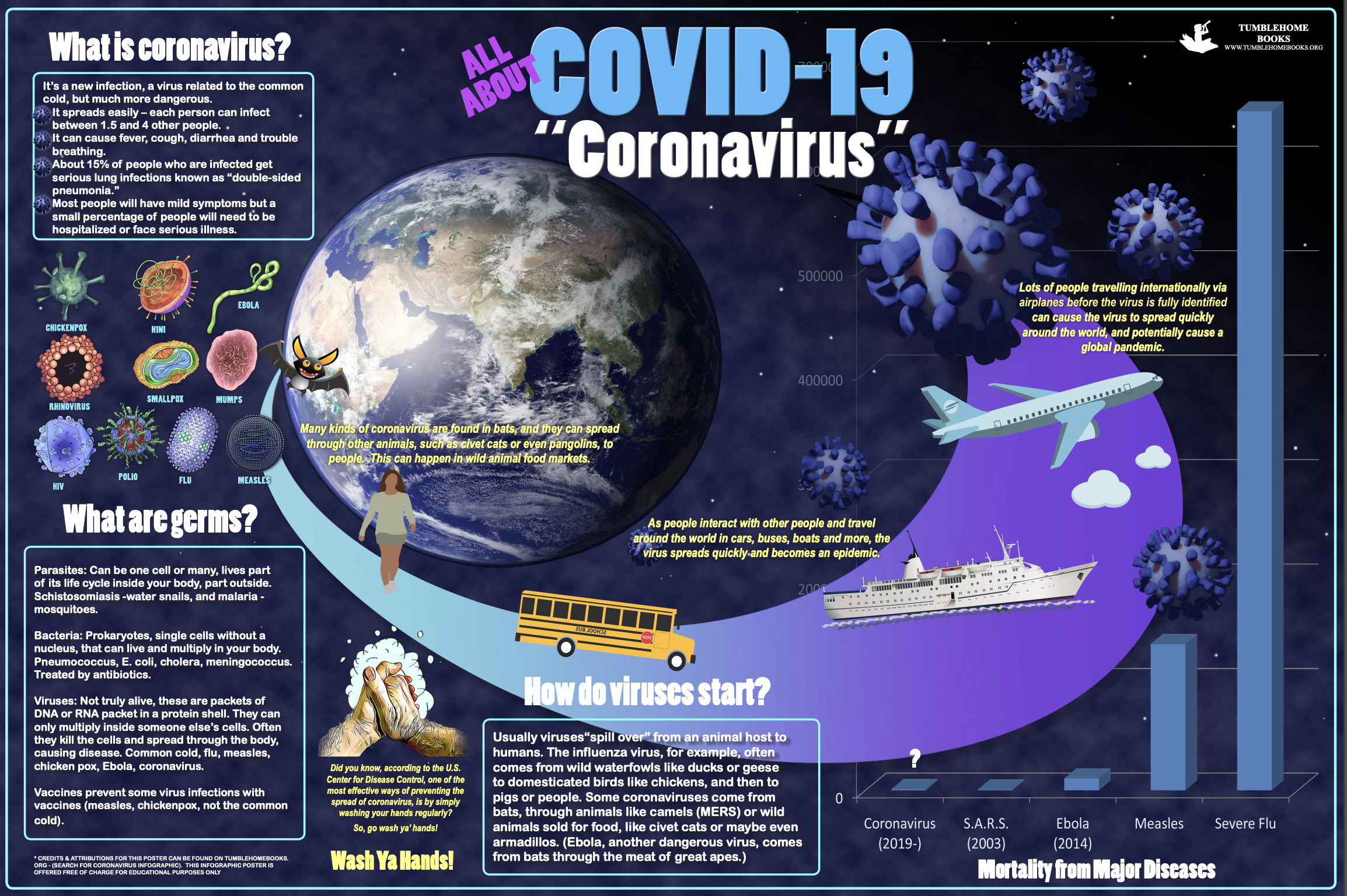
GAMES for Learning about Epidemics, including COVID-19 (coronavirus)
Don’t Touch Your Face!
Purpose of the game: to help people notice and try to reduce how often they touch their faces.
Where to Play: Great for a classroom or other place people gather
How to Play:
Each player gets 6 counters to start. Every time someone sees you touching your face, they can claim one of your counters. (Only the first person to see you gets the reward.) Try to win a counter back by catching someone else touching their face! After a certain length of time, the winner is the one with the most counters.
Learning note: One of the CDC’s prime recommendations for avoiding COVID-19 infection, along with washing hands frequently, is to avoid touching our faces. Easier said than done! Studies show that most people touch their faces around 24 times per hour.
At the end of this lesson, it can also be informative to graph how many people have how many counters. We would expect this to fall into a normal curve with a mean of 6… but let’s find out!
Video: How To Make A Coronavirus Pinata:
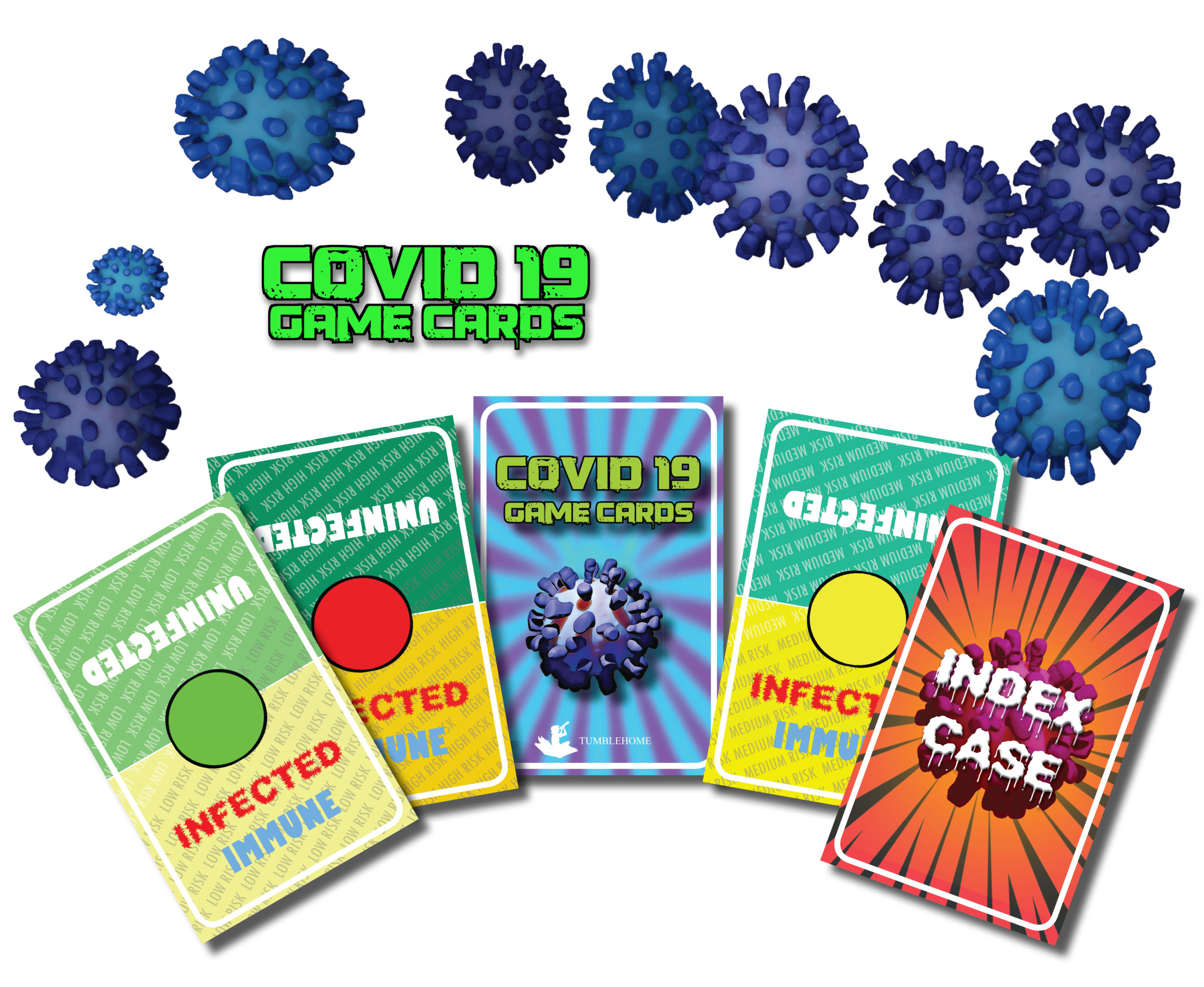
EPIDEMIC Card Game
Make your own card deck, either from index cards or (a little fancier) by using the templates below to print on card stock.
Purpose of the game: to show how an infection can spread through an enclosed population like a cruise ship or nursing home. Variations demonstrate the impact of a vaccine or of quarantine.
Where to play: In a classroom, afterschool program, or at home.
To make a card deck:
Use 72 index cards. Mark a front and back for each card. For example, the lined side could be the back and the unlined side the front, or you can draw a virus on the back side.
Make one card the INDEX CASE or starter card. Clearly mark its front side.
Mark the faces of all the other cards with a clear up and down (or top and bottom). The upper side reads “SUSCEPTIBLE,” while the bottom side reads, upside down, “IIMMUNE.” It’s good to distinguish these also by color, stripes, or something else easy to see at a glance.
Examples of home-made game cards (back and front of cards):
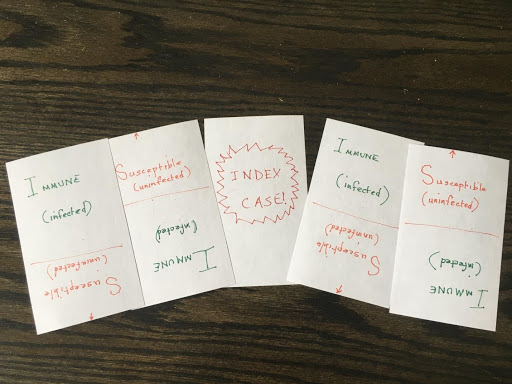
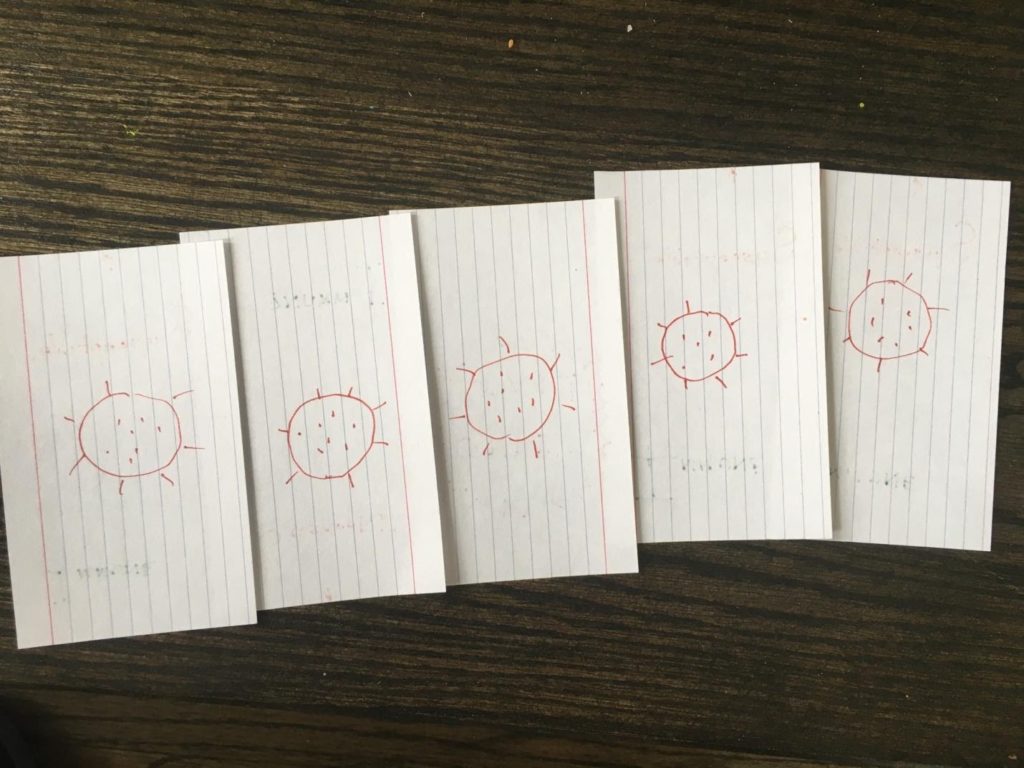
To print a card deck: Use this template to print 72 cards:
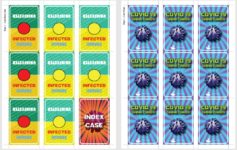
How toPlay Ro=2
The object of the game is to see how quickly and thoroughly one infected person (card) can infect a whole group (deck of cards). Each infected card is flipped face up for one round of play. After it has a chance to infect two others, it is flipped face down again but rotated to show it is immune—it can’t be infected again.
To play, one student or player flips and shuffles the cards, while another records how many new infections occur at each step.
Ro=2 means that each infected person (card) can infect two others in contact with them. Epidemiologists call this the basic reproductive rate. But note that once infected, a card becomes immune and cannot be infected a second time, so the effective R, or Re, will decrease gradually over time. (Can you explain why?)
Start by challenging everyone to guess how many uninfected people (cards) will remain at the end of the game. Record the guesses. Also ask players how many rounds it will take to infect everybody (all the possible cards).
Find the Index Case card and turn it face up. Arrange all the other cards face down with the tops and bottoms of the cards aligned. Insert the Index Case card face up somewhere near the middle of the deck.
For Round One of play, the card flipper finds the two cards on either side of the Index Case card and turns them face up also. Now they can infect other cards. The recorder notes that 2 cards were infected in the first round.
The flipper shuffles the deck, making sure not to change the top/bottom alignment of the cards. This will shift the face-up, infected cards to new positions within the deck.
Now, in Round Two, check the cards again. The card flipper turns the two cards touching each infectious card face up. But the old infectious cards are no longer infectious. The disease has run its course and they are now immune. Turn them face down again, but with the “IMMUNE” end on top. Record 4 new infections for Round Two. Shuffle and play another round.
Continue play. If the card next to an infectious card is already immune, it cannot be infected. If an infectious card ends up at one end of the deck, it can only infect one card. That way, the number of new cards infected on each turn will NOT be exactly 2,4,8,16, etc., but will be something more like 2,4,7,12, etc.
Play ends when there are no susceptible cards next to any infectious card. The epidemic is over. How many rounds did it take? How many cards remain uninfected?
VARIATIONS
CHANGE Ro. How will the game change if you have an Ro of 3? 5? 8? What if you have an Ro of 1? How can you play with an Ro of 2.5?
QUARANTINE
Use one or two decks of cards, but with only one Index Case. Split the remaining cards into two piles. Start play as before with the infected deck (the deck that includes the Index Case). This deck is in quarantine; cards stay in that deck. After each round of play, randomly draw one card from each deck and exchange it with the other deck. (After all, no quarantine is perfect!) Predict: will the infection spread before it dies out? How many cards will remain uninfected at the end?
VACCINE
Scientists have discovered a vaccine for the infection. Decide how many people/cards will get the vaccine. 10? Half? 60? Turn that many cards to IMMUNE before starting play. Then play Ro=2 as before. How long does it take before the infection dies out? How many people remain uninfected?
SEVERITY
For this version of the game, add a colored dot to your cards: green for a young, healthy card, yellow for a more fragile person (elderly or with underlying condition) or red (elderly with chronic disease). After play, look at all the cards that have been infected. For each card, see if it survives the epidemic. You will need to roll a die to see each card’s chance of “dying” and being removed from the game.
Green dot card: roll the die three times. If you get three sixes in a row, the card “dies.”
Yellow dot card: roll the die two times. If you get two sixes in a row, the card “dies.”
Red dot card: foll the die once. If you get a six, the card “dies.”
How many cards survive the epidemic?
Video: How To Wash Your Hands The Right Way
NETLOGO VIRUS SIMULATION/GAME – COVID-19 EDITION
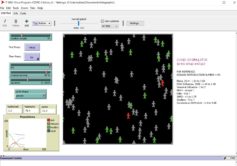
Download the game here:
![]() This requires the latest Netlogo (6.1.1)
This requires the latest Netlogo (6.1.1)
Download NetLogo
This game, developed by Tumblehome, is a simplified version of the Netlogo Core Model Library Virus Simulation originally developed in NetLogo by Uri Wilensky and others at Northwestern University.
This simulation represents the spread of infection, followed by immunity, within a closed population.
The game starts with two infected (red) individuals. Changeable parameters are size of population (number-people), chance of recovery, duration of illness, and Ro, the basic reproduction number, which ranges from 1 to 7. You can run the epidemic quickly or slowlyuntil it burns out (if you continue, the illness becomes seasonal, as immunity in the game only lasts a year).
To start, hit setup inthe middle of the page, and then go. To stop at a certain point and look at curves, hit go again; then you can change the parameters and hit setup and go again.
As the simulated infection spreads, green (healthy) people gradually become red or gray (immune); some of them die and disappear off the stage.
We suggest kids look at the different curves at different levels of Ro. They can also imagine different populations (these are all closed populations): a college (very high chance of recovery); a cruise ship (a bit less); a nursing home (a lot less). Also, they can play with Ebola (lower Ro but 50% mortality), MERS (30% mortality), etc.
Wilensky, U. (1999). NetLogo. http://ccl.northwestern.edu/netlogo/. Center for Connected Learning and Computer-Based Modeling, Northwestern University, Evanston, IL.








